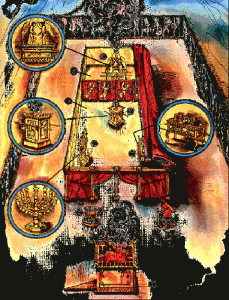 When one finds oneself in the depths of a temptation that is almost overpowering. And the enemy assails you, you ask Jesus for help. However when you ask Jesus for help you do it with a few things firmly in mind. First you ask for help knowing that Jesus Understands the plight of your soul for Jesus decided to place himself in the depths of human woe. It would have been an infinite humiliation for Jesus to come as Adam in the garden, but Jesus decided to take on the seed of Abraham so that he could be a merciful and faithful high priest. (Hebrews 2:16-17).
When one finds oneself in the depths of a temptation that is almost overpowering. And the enemy assails you, you ask Jesus for help. However when you ask Jesus for help you do it with a few things firmly in mind. First you ask for help knowing that Jesus Understands the plight of your soul for Jesus decided to place himself in the depths of human woe. It would have been an infinite humiliation for Jesus to come as Adam in the garden, but Jesus decided to take on the seed of Abraham so that he could be a merciful and faithful high priest. (Hebrews 2:16-17).
Second you ask for help knowing that Jesus can help you in the problem you are dealing with. But more than taking on the seed of Abraham, Jesus was tempted in all points like as we are yet without sin (Hebrews 4:15). We can say with all assurance that Jesus Understand not just by omniscience, but by experience the depths of temptation for he was tempted and therefore he can be merciful and faithful (Hebrews 2:18).
So when temptation assails us, we can go to Jesus and call out to him. And when we call on Jesus, we can know we have a faithful and merciful High Priest listening. And that High Priest knows exactly how much strength is needed to overcome the temptation. That High Priest knows exactly how much grace we need. And thus we can boldy come to the throne of grace to obtain the mercy (Hebrews 4:16) that our brother (Jesus is not ashamed to call us Brethren Hebrews 2:11) will give us. And then after God gives us the grace that is needed to overcome, then Jesus puts on a little more extra grace for where sin abounds, grace much more abounds (Romans 5:20). And then we can sing the song with James Cleveland “Victory Shall be Mine.”

 I was reading
I was reading  Certainly we as Sabbatarians have heard this view. The understanding is that the Sabbath of the Old Testament was removed at the cross of Jesus Christ. The view rests on the belief that there is a “radical discontinuity between the Old and New Testaments.”
Certainly we as Sabbatarians have heard this view. The understanding is that the Sabbath of the Old Testament was removed at the cross of Jesus Christ. The view rests on the belief that there is a “radical discontinuity between the Old and New Testaments.” The next view is the transference view. This is the understanding that there is truly continuity between the Old and New Testament, and thus the Sabbath commandment still has relevance and validity for contemporary Christians.
The next view is the transference view. This is the understanding that there is truly continuity between the Old and New Testament, and thus the Sabbath commandment still has relevance and validity for contemporary Christians. John Calvin, according to Bacchiocchi, clarified this understanding by stating that the moral aspect is the function of the day which was to allow God to “work in us, provide time for church services, and to protect dependent workers.”
John Calvin, according to Bacchiocchi, clarified this understanding by stating that the moral aspect is the function of the day which was to allow God to “work in us, provide time for church services, and to protect dependent workers.”
